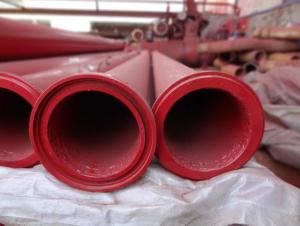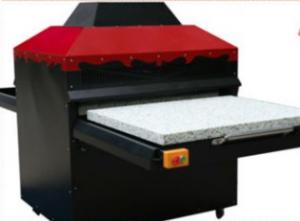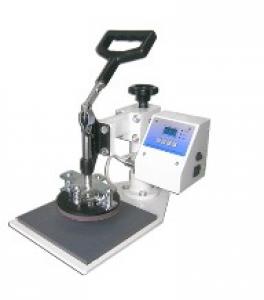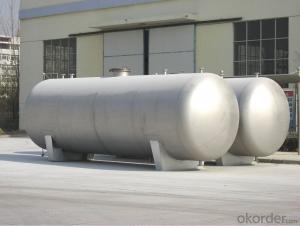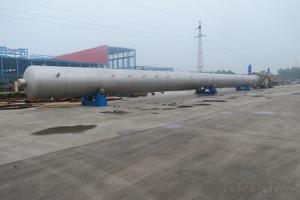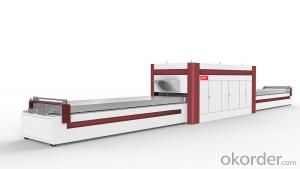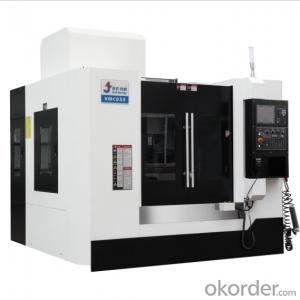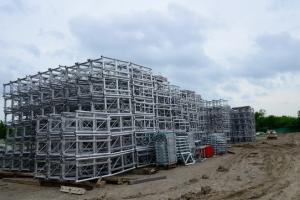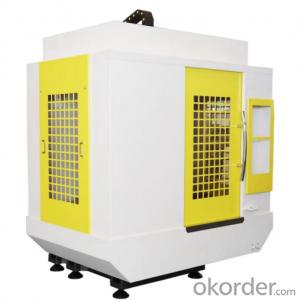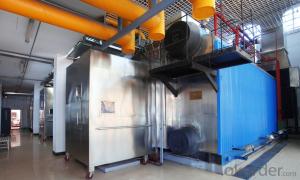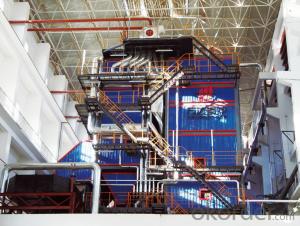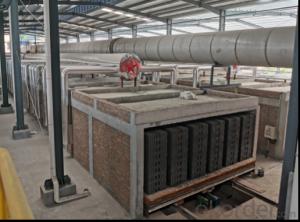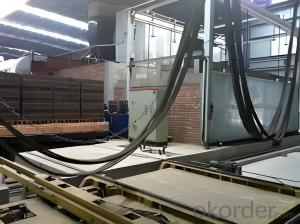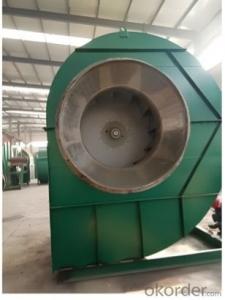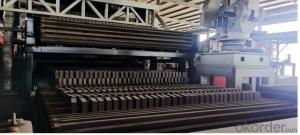Dry Roasting Equipment---Tunnel Roasting Kiln---The Mobile Rotary Tunnel Kiln
- Loading Port:
- China main port
- Payment Terms:
- TT OR LC
- Min Order Qty:
- 1 m²
- Supply Capability:
- 50 m²/month
OKorder Service Pledge
OKorder Financial Service
You Might Also Like
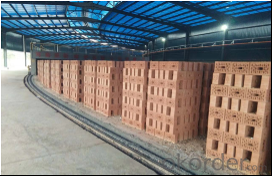
Tunnel roasting kiln can be divided into straight tunnel kiln (with kiln car) and mobile rotary tunnel kiln (without kiln car). Straight tunnel kilns can be further divided into masonry tunnel kilns and prefabricated tunnel kilns in terms of construction methods. The mobile rotary tunnel kiln belongs to the assembled tunnel kiln.
The Mobile Rotary Tunnel Kiln:
(1) Main products: sintered common bricks, porous bricks, hollow bricks
(2) According to the different output, the gauge of mobile rotary tunnel kiln can be divided into the following types:
① the gauge is 7.2 meters, suitable for 150,000-200,000 pieces per day (common bricks)
② the gauge is 8.6 meters, suitable for 200,000-300,000 pieces per day (common bricks)
③ the gauge is 10.8 meters, suitable for daily production of 300,000-400,000 pieces (common bricks)
④ the gauge is 12.98 meters, suitable for daily production of 400,000-500,000 pieces (common bricks)
⑤ the gauge is 16.8 meters, suitable for daily production of 500,000-600,000 pieces (common bricks)
(3) Kiln body structure
Using prefabricated structure, the kiln wall and kiln roof are factory processed into different units and spliced on site. Aluminum silicate refractory fiber is both the working layer and the insulation layer, and different thicknesses and materials are used in different temperature sections. The exterior is composed of steel frame and color steel plate and relates to the transmission mechanism to complete the movement of the kiln body.
(4) The drying and roasting of the mobile rotary tunnel kiln is completed at one time, and the length of the tunnel kiln is more than 160 meters. The diameter of the inner rail of the tunnel is greater than 78 meters, and the diameter of the outer rail of the tunnel is greater than 90 meters.
(5) Firing temperature: 900-1050℃
(6) Firing cycle: 48h
- Q:What is a combination of drying equipment?
- As we all know, each dryer there are some shortcomings, through the same or two or more models in series, using their own advantages, often play a single device can not achieve the purpose.
- Q:What are the characteristics of the drum dryer?
- conventional direct heating rotary drum dryer conventional direct heating rotary drum dryer in the dry material and hot air Direct contact with the way of convection heat drying in accordance with the direction of flow between the hot air and material, divided into parallel and countercurrent.
- Q:What are the common types of dryers?
- The belt dryer consists of a number of individual unit segments, each of which includes a circulating fan, a heating device, a separate or common fresh air extraction system and an exhaust gas extraction system. The amount of drying medium, temperature, humidity and exhaust cycle
- Q:What are the basic types of common drying equipment?
- (2) Belt Dryer Belt Dryer consists of several independent unit segments. Each unit section includes a circulating fan, a heating device, a separate or common fresh air extraction system and an exhaust gas extraction system. On the drying medium quantity, temperature, humidity and exhaust gas circulation operating parameters, can be independently controlled, so as to ensure the reliability of working with dry and operating conditions optimization.
- Q:What are the types of drying equipment?
- According to the heating method, the dryer is divided into convection, conduction, radiation, dielectric and other types. Convection dryer, also known as direct dryer, is the use of hot dry media and wet material in direct contact with convection way to transfer heat, and the generated steam away; Conductive dryer also known as indirect dryer, which uses conduction The heat is transferred from the heat source through the metal wall to the wet material, and the resulting wet steam can be removed by means of reduced pressure suction, passing a small amount of purge gas or condensing it on a separately provided low
- Q:How to choose the right drying equipment and drying technology
- Materials can be divided into two kinds of hygroscopic and non-hygroscopic.
- Q:How to solve the dryer a series of failures
- If the dew point reading is normal after the dry machine is replaced, the dew point rises rapidly after the end of the drying cycle of the dryer, indicating that the ambient air may enter the closed gas path, causing the dryer to absorb prematurely. Another possibility is that the dryer is not completely regenerated or contaminated. If the dew point reading and reflow air dew point readings are close, it indicates that the regenerative gas path is completely failing or the desiccant is seriously polluted.
- Q:What are the common drying methods?
- Is the use of moisture to remove gas, liquid, solid material in a small amount of water, due to moisture dehumidifier dehumidification capacity is limited, only used to remove trace moisture in the material, so the production of very little.
- Q:The working principle of belt dryer
- For the material temperature does not exceed 60oC requirements, can be used about 80oC dry gas. Multi-stage combination can better play the performance of belt dryer, and dry more uniform.
- Q:What is the best drying equipment?
- Through the filter to make hot air purification, and then by the left shunt plate to the layers, so that the average hot air through each layer of dry material.
1. Manufacturer Overview |
|
|---|---|
| Location | |
| Year Established | |
| Annual Output Value | |
| Main Markets | |
| Company Certifications | |
2. Manufacturer Certificates |
|
|---|---|
| a) Certification Name | |
| Range | |
| Reference | |
| Validity Period | |
3. Manufacturer Capability |
|
|---|---|
| a)Trade Capacity | |
| Nearest Port | |
| Export Percentage | |
| No.of Employees in Trade Department | |
| Language Spoken: | |
| b)Factory Information | |
| Factory Size: | |
| No. of Production Lines | |
| Contract Manufacturing | |
| Product Price Range | |
Send your message to us
Dry Roasting Equipment---Tunnel Roasting Kiln---The Mobile Rotary Tunnel Kiln
- Loading Port:
- China main port
- Payment Terms:
- TT OR LC
- Min Order Qty:
- 1 m²
- Supply Capability:
- 50 m²/month
OKorder Service Pledge
OKorder Financial Service
Similar products
New products
Hot products
Related keywords
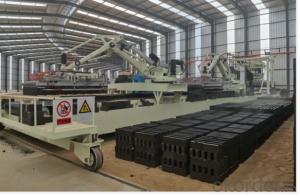
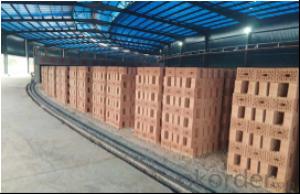
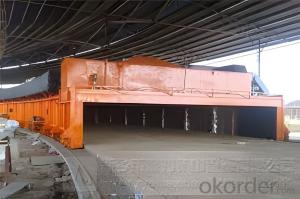
 Xi'an Research and Design Institute of Wall & Roof Materials Co,.Ltd.
Xi'an Research and Design Institute of Wall & Roof Materials Co,.Ltd.
